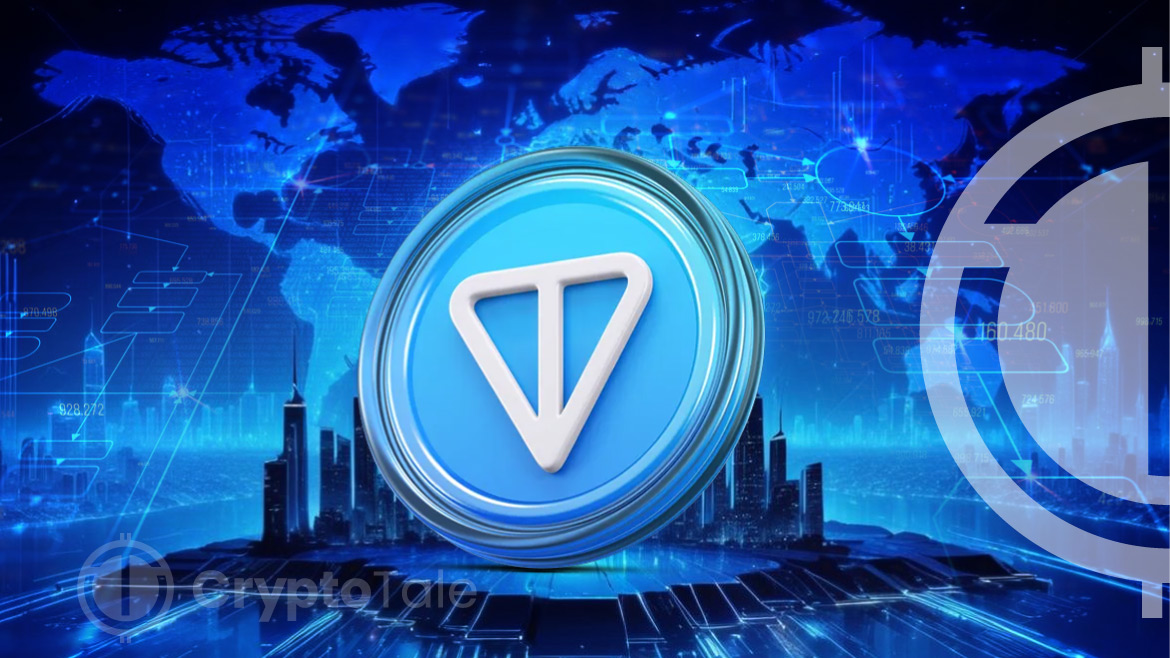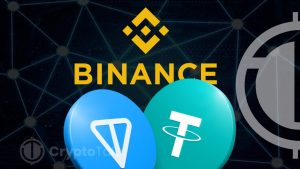
Telegram is one of the fastest-growing apps, with over 800 million monthly uses. Do you know that it has launched the TON blockchain? Yes, the TON blockchain stands out as a pioneering solution to the interoperability problem. This article provides a detailed review of the TON blockchain, exploring its innovative approach to achieving interoperability and its potential impact on the broader blockchain ecosystem.
What is Toncoin?
The Open Network (TON) is a layer 1 blockchain created by Telegram in 2018. The blockchain was developed to support its large user base and handle large-scale applications and transactions. Its native cryptocurrency is Toncoin, which is used to pay for transaction fees and execute smart transactions.
Unlike other blockchains, TON was designed to solve major issues like scalability and interoperability. Through sharding, it is capable of handling millions of transactions per second and can seamlessly interact with other blockchains, enhancing its utility and reach. Furthermore, it uses a proof-of-stake consensus mechanism.
History of Toncoin
Toncoin’s history dates back to 2018, when Pavel and Nikolai Durov, the founders of Telegram, issued a whitepaper for a blockchain called Telegram Open Network. It attracted significant attention, leading to a successful ICO raising $1.7 billion. However, in 2020, Telegram left TON because of legal challenges initiated by the U.S. Securities and Exchange Commission. The SEC had accused Grams, the native token at that time, of being an unregistered security.
Later, in May 2020, TON lost the case, resulting in the repayment of investors’ funds and Telegram leaving the project entirely. The project was left in the hands of the community, which consisted of developers and blockchain enthusiasts. TON Foundation (non-profit community), which took over after Telegram left, later changed the name of the blockchain to ‘The Open Network,’ and it became an open-source platform.
Key Features of TON Blockchain
Infinite Sharding Paradigm
Unlike most blockchains, the TON blockchain follows a bottom-up method. This method begins with the granular level, where each smart contract or account operates as its own individual chain, called the account chain. Later, millions of individual account chains are grouped together into shard chains. This allows the network to achieve higher throughput compared to single-chain architecture because shards can process transactions independently and in parallel. Furthermore, based on the load and demand, the network can adjust the number of shards.
The blockchain also ensures that the state of the shards are consistent and unified, making sure all transactions are validated and recorded accurately across the network. In addition, communication such as transactions and messages between different shards can be exchanged without delays or issues.
Hypercube Routing
Hypercube routing is a complex network communication protocol that was designed to deliver messages more efficiently by choosing the shortest path available. The network is in the shape of a hypercube, and each node is connected to multiple other nodes, allowing for efficient routing. This minimizes the number of nodes that a message needs to pass through to reach the destination, reducing latency and increasing communication speed across the network.
The structure of a hypercube makes it inherently suitable for scaling, and it ensures multiple routes between nodes. This ensures that in the event of a block in a route, the network can adjust the route and deliver the message efficiently.
Cryptocurrency Bloodbath: Solana, Dogecoin, Toncoin Crash – What’s Next?Interoperability
Interoperability is a major feature of the TON blockchain. It enables the transfer of assets like tokens or cryptocurrencies and data exchange between different blockchains. The blockchain also allows smart contracts to interact with smart contracts on other blockchains using oracles and bridge mechanisms.
TON blockchain also supports decentralized exchanges that facilitate cross-chain trading. This allows users to trade different currencies of different blockchains directly from their wallets without the need for intermediaries.
TON Virtual Machine (TVM)
TVM is an important part of the TON blockchain. Similar to Ethereum Virtual Machine (EVM) on Ethereum, TON Virtual Machine acts as the execution environment for smart contracts on TON. It processes and executes smart contracts and handles state transitions within the network. TVM allows developers to create complex smart contracts and execute them efficiently, even while handling large volumes of transactions.
It was designed to handle different operations needed for smart contracts, such as managing data, creating new messages, parsing incoming messages, and more. Furthermore, it supports multi-threading, which allows various smart contracts to be executed in parallel, reducing the need for computational resources. In addition, TVM is also compatible with EVM, allowing developers who are familiar with Ethereum to port their smart contracts to TON with small modifications.
TON Ecosystem
TON Storage
TON Storage is a decentralized file storage system offering secure, scalable, and cost-efficient storage capabilities within the TON ecosystem. It supports the storage of large data by distributing data to various nodes in the network, enhancing its reliability and security. Based on the users and their data, it can scale dynamically while maintaining the same degree of security by optimizing resource usage.
The stored data is encrypted and often checked for integrity, ensuring authorized access and data is not tampered with. TON Storage’s decentralized nature and redundancy allow it to withstand node failures and network disruptions without losing data, making it highly fault-tolerant.
TON DNS
TON DNS (Domain Name System) is a decentralized naming service that makes it easy to read blockchain addresses. It was designed to provide human-readable names to smart contracts, blockchain addresses, accounts, and other network resources. TON DNS functions the same way a traditional DNS system works, except in a decentralized manner. It leverages blockchain technology while replacing the long cryptographic address with readable names, ensuring the readable names offer the same security and reliability as the cryptographic address.
The structure of the TON DNS is similar to traditional DNS, with top-level domains (TLDs) with the names .ton, .wallet, etc., second-level domains registered under the TDLs, and subdomains under second-level domains. Furthermore, the authenticity of all domain names is verified through cryptographic proofs.
Toncoin Breaks Out from Ascending Triangle: Analyst Predicts 12% Rise to $9TON Proxy
TON Proxy is the anonymity layer in the blockchain designed to enhance privacy and security. Like traditional proxy services, it allows users to access the network anonymously, thereby protecting their identity and data from possible surveillance. It masks users’ IP addresses, making it difficult to track their activities. Furthermore, data is encrypted and transmitted through a secure tunnel, ensuring confidentiality. The blockchain also uses dynamic routing, allowing traffic to route to different nodes to maintain optimal performance and reliability.
TON Payments
TON Payments is an important part of the TON ecosystem, which was designed to perform fast and low-cost transactions within the blockchain. The blockchain can process millions of transactions at fast speeds and has a block time of 5 seconds. Its low fees make it cost-effective for small and micropayments.
All transactions in the blockchain are secured using advanced cryptographic techniques and are recorded on the blockchain, making it tamper-proof. Furthermore, TON Guard leverages AI-driven tools for advanced monitoring and management of transactions in the network.
Conclusion
TON stands out as a highly scalable and interoperable blockchain platform. Through its native coin, Toncoin, it addresses major blockchain challenges such as scalability and interoperability through features like infinite sharding, hypercube routing, and proof-of-stake consensus mechanism. It also comprises a TON Virtual Machine for smart contract execution, TON Storage for decentralized file storage, and more. Currently, TON stands as one of the top 10 cryptocurrencies thanks to its robust infrastructure and various innovative features.














